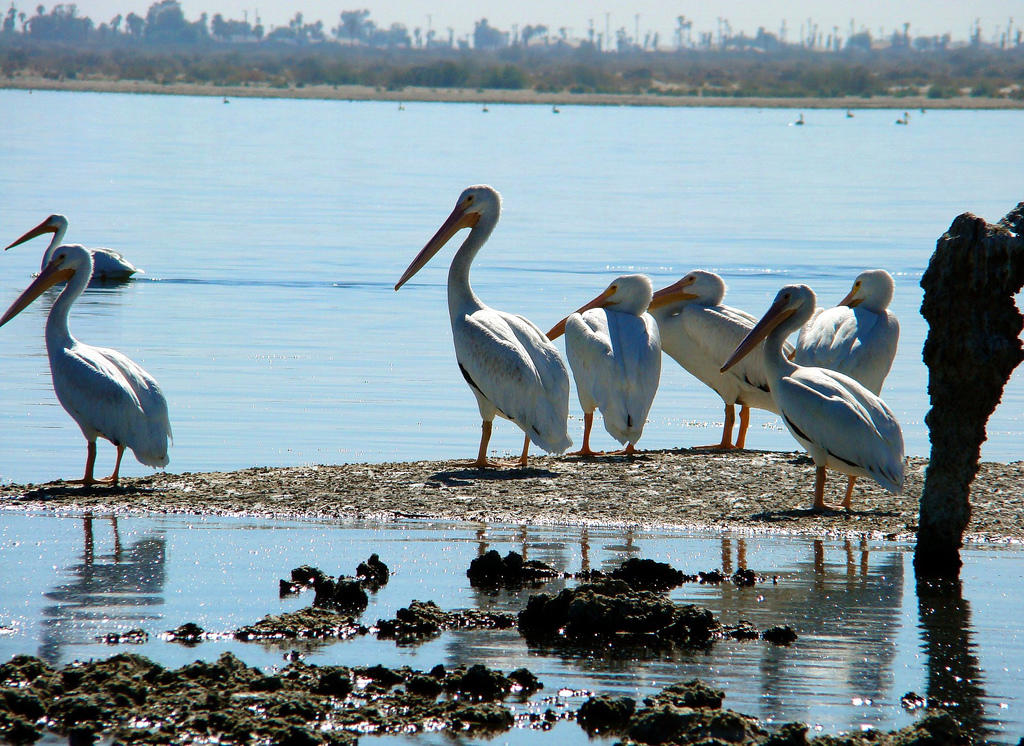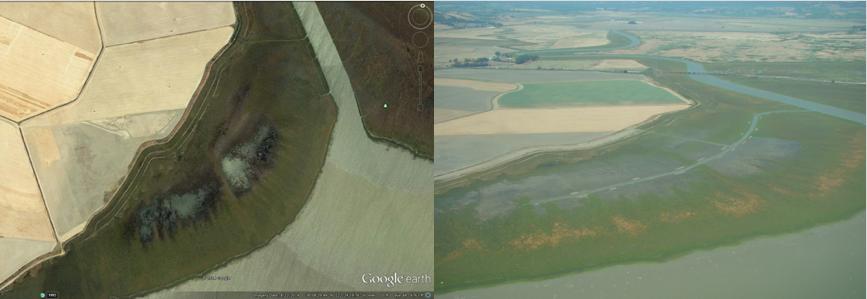Latest News and Updates from Audubon in California
California Condor. Photo: Scott Frier/USFWS

From the melodies of songbirds to the drumming of woodpeckers, birds have long been associated with the sound of spring. Unfortunately, recent research suggests that climate change is driving changes in the calendar period we currently call spring—and that these changes are harming herbivorous and mostly-herbivorous birds.
Specifically, the research observed how different “springtime events” associated with the reproduction of various species has changed with climate in the United Kingdom. The study found that temperature, rather than precipitation, had the largest influence on the timing of breeding in birds and flowering in plants. Although these dates shifted for most animals, the most harmful consequences were found in primary consumers. Primary consumers are essentially the middle of the food chain, or animals that eat plants but are prey to other animals.
While primary consumers include insects, it also means seed-eating birds such as Larks, Cardinals, Finches and Sparrows. In California, environmental toxins and hunting have often threatened our higher-in-the-food-chain predators such as the California Condor and Brown Pelican. Unfortunately, climate change is beginning to threaten the smaller birds too—the ones we may sometimes take for granted as an inherent part of our springtime surroundings.
This commercial for Nivea sunscreen has the critics talking, and not for the right reasons. "Care from the Air," was submitted for Cannes consideration by its agency, Jung von Matt/Elbe. Bartle Bogle Hegarty co-founder and Cannes Lion jury president Sir John Hegarty described the premise of the piece to journalists at Cannes.
"The big, big problem is kids on beaches don’t have enough sunscreen on. They run around and it rubs off. So they developed a [robotic] seagull that flies across the beach and basically shits suntan cream from Nivea. This is, as you can understand, something we had to take very seriously. It’s the most stupid thing I think I’ve seen in my whole life. I actually thought the Monty Python team had gotten together and entered it into [Cannes], to see if we would vote for it.”
Is this judge's take too harsh? We can't help but think that at least this is an ad where the often maligned gull gets to play the hero.
(via Adweek)

Conservation groups including Audubon California hope that more than $80 million included in the recently-approved state budget will be the first step in a longer, more substantial commitment from the Legislature to addressing the developing environmental crisis at the Salton Sea. The $80.5 million for planning and restoration at the Salton Sea, part of the $167 billion state budget, will ultimately come from Proposition 1 funds approved by voters in 2014.
While the new funding marks the largest amount that the State of California has ever contributed to restoration at the Salton Sea, it is nonetheless only a fraction of the several billion dollars that will be needed to stabilize the situation there.
The funding will help the state pay for the development of a long-term management plan that seeks to address the problems created by reduced water deliveries to California’s largest inland lake. As the Salton Sea shrinks in the coming years, it is expected to have serious ramifications for the more the 400 species of birds that rely on its habitat. Less water will also result in the exposure of hundreds of acres of plays, creating a toxic dust and a serious public health hazard.
Money will also jump-start restoration of habitat along the edge of the lake, creating infrastructure to move water to a number of habitat areas.

Courtney Gutman got an aerial view of the progress made at our Sonoma Creek enhancement project which we completed in November. Gutman is our restoration project manager from the Richardson Bay Center & Sanctuary and oversaw construction on the 400-acre tidal marsh in the greater San Francisco Bay.
Within weeks of finishing the construction, the team could already see a myriad of vegetation and wildlife coming back to the area, including a variety of small shorebirds and pickleweed, a native succulent that absorbs saltwater.
The Sonoma Creek enhancement is the first project of its kind on a pre-existing marsh. Before the project, sea water was able to wash in during high tide, but with no way for it to drain, stagnant pools became perfect breeding ground for mosquitoes and an imperfect breeding ground for plant life and other animals. To solve this problem, we dug canals to help with drainage of the area. Natural channels can now form in areas that were once stagnant, contributing to a healthier marshland. We also moved about 30,000 cubic yards of soil to create a transition ramp that slows storm surges and gives animals somewhere to go when the tide gets too high.
Gutman says people are starting to see estuaries beyond their importance for wildlife, plants, and biodiversity.
“Now on top of that we’re seeing how important they are for combatting climate change. They’re truly our natural barriers for rising sea levels,” she says.
For more information about the project, visit our Sonoma Creek page.
Our newsletter is fun way to get our latest stories and important conservation updates from across the state.
Help secure the future for birds at risk from climate change, habitat loss and other threats. Your support will power our science, education, advocacy and on-the-ground conservation efforts.
Join the thousands of Californians that support the proposed Chuckwalla National Monument.